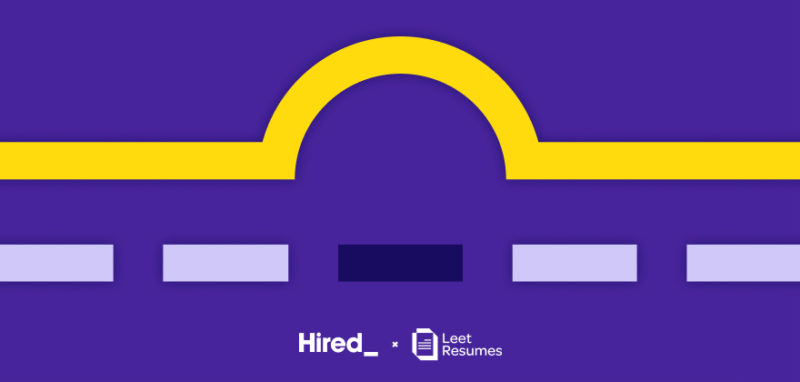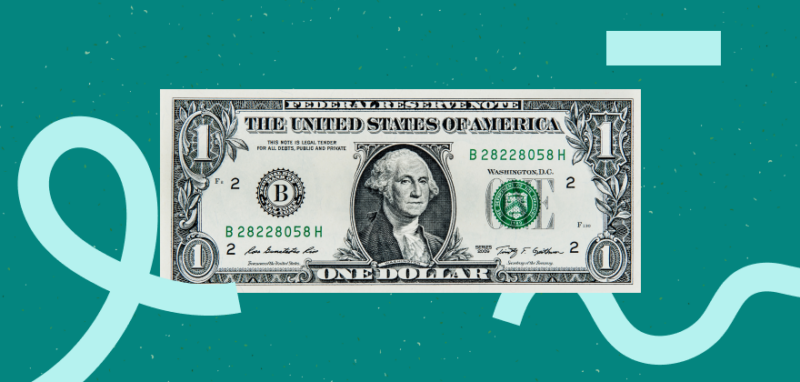
Why Your Career Narrative Is Just as Important as Your Work History
To maximize your chances of making a meaningful impression and landing a phone screen with the recruiter, offer a clear career narrative upfront. Recruiters and hiring managers are busy reviewing dozens or even hundreds of applications for a single role. They only have a few minutes (if that) to look at your resume, LinkedIn, portfolio, or Hired profile.
In today’s competitive job market, simply having a list of past roles and accomplishments isn’t enough. The most successful jobseekers tell a compelling story — a career narrative — that positions them as the ideal fit for the roles they pursue.
Here’s how to do it.
Connect the dotsFirst things first, a career narrative isn’t just a retelling of your job history. It’s a strategic story that connects the dots between where you’ve been, where you are, and where you want to go. Its purpose is to help potential employers see not just what you’ve done, but who you are as a professional and how you’ll add value to their organization.
Begin by making a list of the roles you’ve held, projects you’ve undertaken, challenges you’ve faced, and accomplishments you’ve achieved. Go beyond the resume bullet points and think deeply about what each experience taught you, how you grew, and how each step led you to the next.
As you reflect, you’ll likely notice recurring themes or patterns. Maybe it’s a passion for leading teams, an ability to optimize processes, or a knack for solving complex problems. This common thread will be a cornerstone of your career narrative.
Don’t be afraid to mention challenges head-on in your career narrative too. Highlight what you learned from them, how you overcame them, and how those experiences equipped you for future roles.
Finally, while it’s important to know your entire history, you don’t have to share every detail in your narrative. Instead, pick out 3-4 defining moments that exemplify your professional growth, showcase your skills, or highlight key transitions. These will serve as the main “chapters” of your story.
Certified Career Coach, Resume Writer, and Interview Professional Christy Rosen advises, “Include all the main points. If the job description is focused on X, Y, and Z, you need to align all of that while you’re talking to them. Have a conversation with them. Make it more of a two-way street. Align all the different past experiences with the current role and incorporate specific skills. What are some of the skills you and how else might that align with this job as you move up or as the position grows? Do something different. I’m always all about different.”
Have a catchy headlineYou know that sentence at the top of your resume or below your name on your Hired or LinkedIn profile? That’s your headline. It’s a quick overview of who you are, what you do, and what value you bring. It should be impactful, catchy, and clearly state what job you currently have and/or are pursuing.
A few things to keep in mind:
- If you’re a new grad, your headline should clearly communicate the role you are looking to be in.
- If you have multiple years of experience, your headline should highlight key skills and what you’re looking for in your next opportunity.
Think of your summary as an extension of your headline. This section allows you to build out the details of your headline. Do so by including context around your past experience (if you have it) or talk about your motivations for the role you’re looking for. This is your opportunity to provide a glimpse into your three-minute elevator pitch before diving into your work history.
In your summary, write up to three paragraphs touching on the following points:
- What job you want
- What you’ve done
- What skills you have
- Why you are the perfect candidate for the role
Remove the guesswork
If you have a diverse skill set spanning several disciplines, tell them which you’re most interested in and try to zero in on one or two roles at most. For example, if you’ve worked as both a backend engineer and a data engineer, make it clear you’d like to continue pursuing a career in data engineering.
If you have a background in graphic design and just completed a user experience design bootcamp, tell them you’re looking for user experience design roles. Employers can only guess what interests you. Make the job easy for them by explicitly stating the roles you want.
After discussing the job you’re looking for, explain how your previous experience explicitly relates to the role you’re pursuing. Provide a few lines about what you’ve worked on, what languages, skills, programs, or tools you’ve used, and any achievements.
Next, state how your experiences make you the perfect candidate for the job. Don’t hesitate to mention professional attributes. That could be adaptability and strong communication skills that make you stand out and contributed to your previous successes. Your objective is to keep the message focused so it retains the hiring manager’s attention.
Inject personality into your profileAfter establishing your career narrative in your headline and summary, give your resume and online profiles a breath of life by adding your personality. Bringing your application to life will make you stand out among dozens of other applicants. Plus, it will also make you more memorable to hiring managers.
Your application will be judged in part by how well you convey the qualities that would make you successful in the role. As an engineer, you’re supposed to use logic, rationality, and consistency. If your work is primarily client-focused, attributes such as being personable and relatable will be prioritized. If you’re applying for a role in design, you should represent yourself in interesting, unique ways.
Christy adds, “One of the key things to make it compelling is to show your personality. You need to be engaging on some level because you’re not just communicating that you’ve worked here, here, and here. You’re including impacts you’ve made in a way that will be memorable.”
Show employers what you do best
But how do you insert your personality? If you’re a good writer, show off your skills. Being able to write well is not an inherent skill. For example, if you’re a product manager, it’s important to communicate effectively since time is often not a luxury. While you can probably write a lot about your experience, whittle each role down to five points. They should touch on each aspect of your job in the work experience sections.
If you’re a designer, prove it. Don’t just use a generic resume template. Instead, make your own resume with the design programs you rely on every day. Designers need to know how to organize information clearly. So make sure to keep the design fundamentals of type, space, and color in mind. A visual designer will be judged on the quality of their visual layout. Your resume and portfolio should accurately reflect your skill level.
As always, stay on topic. If it doesn’t make sense to talk about your love of coffee as it pertains to your desired role, exclude those details from your resume. Add anything that relates to the role in question and nothing more.
Moving forward with your career narrativeBe sure to practice telling your narrative. Whether it’s in a job interview, a networking event, or a casual conversation, being able to articulate your story confidently and coherently will leave a lasting impression. With these tips in mind, you’ll grab the attention of hiring managers and be that much closer to getting your dream job.
As you progress in your career, gain more experience, and achieve new milestones, revisit and refresh your narrative. Your story is ever-evolving, just like you.
Originally written by Brittany Curran in March 2018. Updated by Hired Content Team September 2023.
Related blog posts

How to Handle an Employment Gap on Your Resume (Flip the Script!)
You’re not your work history Addressing an employment gap on a resume is one of the most...

Interviewing After a Layoff? How to Be Confident & Become a Top Candidate
The third article in our series to help jobseekers bounce back better than ever… Once you’ve...

Meet Hired’s Candidate Experience Team: Supporting Jobseekers Every Step of the Way
A top resource for jobseekers looking for Tech & Sales roles A positive...

Ready to Find Your Dream Job? Start with Knowing What You Want
Searching for a new job, let alone a ‘dream job,’ may feel daunting, especially if you...
Leaders Share Tips to Build Career Resilience as a Woman in Tech
No career journey is complete without some level of uncertainty along the way. Discover tools to...

Expert Tips: How to Manage Your Finances While You Job Hunt
According to a study, 63% of workers live paycheck to paycheck, so how do you manage finances...

